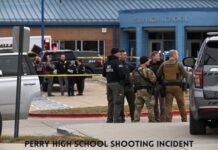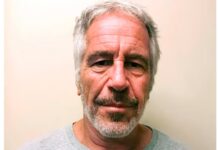In a recent announcement of North Korea’s Hwasong-18 Test, reported by state media on Tuesday, North Korean leader Kim Jong Un has issued warnings of potential retaliatory actions against what he perceives as increasing military threats led by the United States. This statement came following his supervision of the third test of North Korea’s highly advanced missile designed to target the U.S. mainland.
Kim’s assertion indicates confidence in the growing missile arsenal and suggests the likelihood of continued weapons testing activities leading up to the 2024 U.S. presidential election. Despite this, experts emphasize that North Korea must conduct more substantial tests to substantiate its capability of targeting the U.S. mainland effectively.
Following the launch of the Hwasong-18 intercontinental ballistic missile (ICBM) on Monday, Kim conveyed that the test showcased North Korea’s potential response to any perceived adversarial actions by the United States. The Korean Central News Agency reported Kim’s emphasis on countering what he termed “reckless and irresponsible military threats” with further offensive actions.
Successful Test Launch of North Korea’s Advanced Hwasong-18 ICBM Signals:
The Hwasong-18 ICBM, utilizing solid fuel, is regarded as North Korea’s most potent weapon. Its solid propellant construction makes it harder for external sources to detect than liquid-fueled missiles. However, experts point out that North Korea still faces technological hurdles, particularly regarding ensuring the reliability of nuclear-tipped ICBMs during atmospheric reentry.
The recent launch of the Hwasong-18 missile, flown at a high angle to avoid neighboring countries, covered a distance of 1,002 kilometers (622 miles) for 73.5 minutes at a maximum altitude of 6,518 kilometers (approximately 4,050 miles) before descending and landing in an offshore area along North Korea’s eastern coast. Kim expressed “great satisfaction” with the launch, reaffirming the reliability of North Korea’s strategic striking capability.
Read More: Ukraine Strikes Russian Black Sea Fleet Headquarters in Missile Attack
Ankit Panda, an expert at the Carnegie Endowment for International Peace, noted the signaling nature of the recent test and its role as a developmental trial. However, he highlighted that there’s no significant technical novelty at this early stage, indicating North Korea’s increasing confidence in its new solid propellant Hwasong-18 ICBM.
Evaluating the test, Leif-Eric Easley, a professor at Ewha University in Seoul, acknowledged North Korea’s progress in missile engine technology but highlighted the necessity for tests demonstrating warhead targeting and reentry capabilities.

The Korean Central News Agency referenced a recent U.S.-South Korean meeting that openly disclosed intentions to conduct joint drills involving simulated nuclear attacks on North Korea. This meeting emphasized updating nuclear deterrence and contingency strategies and incorporating nuclear operation scenarios into combined military exercises.
President Yoon Suk Yeol of South Korea expressed the imminent formation of a “nuclear-based, powerful Korea-U.S. alliance.”
Since 2022, North Korea has conducted over 100 ballistic missile tests, breaching UN bans, ostensibly to enhance its nuclear arsenal and secure more significant concessions from the U.S. Efforts to impose fresh international sanctions have been thwarted by China and Russia.
Japan’s Chief Cabinet Secretary Yoshimasa Hayashi indicated coordination with Washington and Seoul to convene a United Nations Security Council meeting regarding North Korea’s latest launch.
The United States, South Korea, and Japan have bolstered military training and enhanced trilateral security cooperation. At the same time, North Korea has sought closer ties with China and Russia in response to perceived threats from the former alliance.
Soo Kim, an expert at a Virginia-based consultancy and a former CIA analyst, highlighted Kim Jong Un’s strategic perspective, emphasizing the regional dynamics and North Korea’s inclination toward alliances with China and Russia to safeguard its interests and challenge U.S.-aligned countries.
In essence, Kim’s regime continues to navigate geopolitical complexities, emphasizing alliances while expressing concerns over perceived threats, all while furthering its weapons program.





